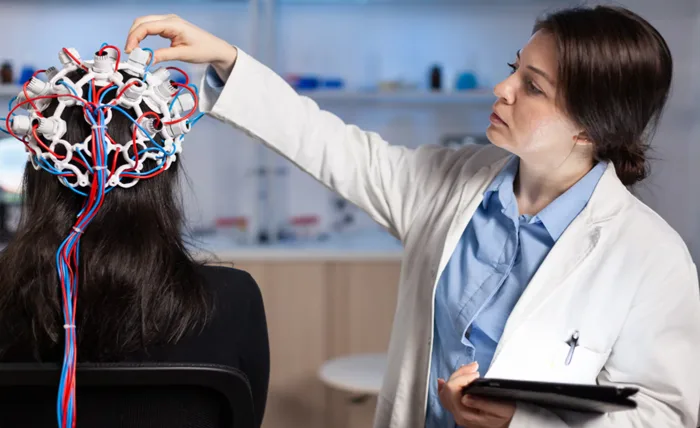Understanding Traumatic Brain Injury: A Deep Dive
The Science Behind Brain Injuries: What Happens Inside?
Traumatic brain injury (TBI) occurs when an external force causes an alteration or disruption in brain function. The mechanics behind TBIs can be complex, involving both physical and chemical changes within the brain. When the head suffers a blow or jolt, or when an object penetrates brain tissue, it can lead to swelling, bruising, or even tearing of brain cells. These physical injuries cause biochemical disturbances that may cascade into unregulated inflammatory responses, increasing cellular damage. The brain’s sensitive environment, sustained through a delicate balance of nutrients and waste removal, is significantly disrupted during such injuries.
The extent of damage can range from minor concussions, resulting in temporary disruptions, to severe injuries that can result in prolonged unconsciousness or even death. This duality highlights the importance of understanding not only the immediate effects of TBIs but also the long-term ramifications, including cognitive deficits, emotional disturbances, and physical disabilities. As our understanding of neuroplasticity the brain’s ability to reorganize itself continues to evolve, specialists in traumatic brain injury recovery Irving emphasize that healing is not just possible but often achievable through sustained effort, personalized rehabilitation, and innovative therapeutic strategies.
Types of Traumatic Brain Injuries: Concussions to Severe Damage
Understanding the types of traumatic brain injuries is essential in categorizing treatments and management strategies. Concussions are the most common type of TBI, occurring after a mild impact, often leaving individuals with temporary symptoms like headaches, dizziness, and confusion. However, repeated concussions can lead to long-term cognitive issues and disorders such as chronic traumatic encephalopathy (CTE).
In contrast, more severe forms of TBI may include contusions, which are bruises on the brain, and diffuse axonal injuries, where widespread damage occurs to the brain’s white matter. Penetrating injuries from objects entering the skull further complicate this spectrum of damage. Each type of injury requires tailored therapeutic approaches, making the classification vital for clinicians and patients alike. Recovery strategies can, therefore, be effectively aligned with the nature and severity of the injury, facilitating personalized rehabilitation programs that embrace the unique challenges presented by each TBI category.
Common Symptoms and Their Impact on Daily Life
Symptoms of TBI can manifest physically, cognitively, and emotionally, creating a multifaceted challenge for individuals seeking recovery. Physically, headaches, fatigue, and dizziness are prevalent, often complicating even the simplest daily tasks. Cognitively, patients may struggle with memory, attention, and processing speed, making it challenging to return to work or school settings. Emotional effects can range from mood swings and anxiety to more severe issues like depression or emotional detachment.
The inability to navigate daily environments, perform at previous occupational levels, or maintain social relationships profoundly influences psychological wellness. Acknowledging these symptoms not only provides a deeper understanding of the challenges faced by TBI survivors but also sets the stage for developing effective interventions. Understanding this complex interplay of symptoms and real-world impact is crucial for healthcare professional training and community awareness programs, which can aid in providing the necessary resources and empathy for individuals affected by TBI.
Holistic Approaches to Recovery: Nourishing Body and Mind
The Role of Nutrition in Healing: Foods That Fuel Recovery
Nutrition plays a pivotal role in brain health and recovery from traumatic brain injuries. A diet rich in antioxidants, omega-3 fatty acids, and other neuroprotective substances can significantly aid in the healing process. Foods such as fatty fish (like salmon), berries, nuts, and seeds nourish the brain and support cognitive function by combating oxidative stress and inflammation.
Furthermore, diets that include leafy greens, whole grains, and lean proteins can provide essential vitamins and minerals that promote neural repair and optimize neurotransmitter function, potentially enhancing mood and memory. Staying hydrated is equally important, as dehydration can exacerbate cognitive impairments. Moreover, incorporating mindful eating practices can help increase awareness of the body’s nutrition needs, alongside fostering a greater connection between physical health and mental well-being.
For individuals recovering from TBIs, working with a specialized nutritionist to devise an individualized meal plan could yield significant benefits. Such strategies highlight not only the importance of eating for physical recovery but also frame nutrition as a crucial component of holistic healing, thereby empowering individuals to take charge of their recovery journey.
Meditation and Mindfulness: The Mental Path to Recovery
The integration of mindfulness and meditation into recovery can be transformative for TBI patients. These practices have shown promising results in reducing stress, anxiety, and mood swings, which are often exacerbated during the recovery phase. Mindfulness techniques encourage individuals to remain present and aware, allowing them to engage with their thoughts and emotions without the weight of judgment. This can build resilience and improve coping mechanisms, fostering a healthier mental space for recovery.
Research shows that mindfulness practices can directly enhance cognitive function by improving attention, memory retention, and emotional regulation critical areas often impacted by TBIs. Simple practices such as focused breathing, guided visualization, or body scanning can be tailored to accommodate a wide range of cognitive abilities and preferences, making these tools accessible to many. Furthermore, community classes and local workshops can provide invaluable opportunities for survivors to connect with peers and practice mindfulness collectively, promoting a sense of belonging and understanding within the journey of recovery.
Physical Activity: Finding Balance in Rehabilitation
Physical activity is often touted as a cornerstone of recovery for individuals with traumatic brain injuries. Exercise has been linked to various benefits, including improved physical capabilities, reduced symptoms of depression, and enhanced cognitive function. Low-impact exercises such as walking, swimming, and tai chi provide avenues to rebuild strength, coordination, and stamina while minimizing the risk of further injury.
Engaging in physically adaptive sports can also offer therapeutic benefits by promoting social interaction, stimulating motor skills, and fostering a sense of achievement elements vital for emotional and psychological resilience. Furthermore, rehabilitation programs that include physical activity often encourage a routine, helping individuals reestablish a sense of normalcy in their daily lives.
However, it is essential to approach physical rehabilitation cautiously, as overstimulation or undue strain on the brain can hinder recovery. Working closely with rehabilitation therapists who understand the nuances of TBI and can customize exercise regimens according to each individual’s status and recovery goals is crucial. Ultimately, by blending physical well-being with cognitive and emotional growth, individuals can reclaim agency over their recovery journeys.
Innovative Therapies in Irving: Pioneering Recovery Techniques
Speech and Language Therapy: Rekindling Communication Skills
Effective communication is significantly affected after a traumatic brain injury, making speech and language therapy an indispensable part of recovery. Therapists employ a variety of techniques to address challenges related to speech, language comprehension, and pragmatic communication the ability to use language effectively in social situations. Tailored interventions may include exercises to improve articulation, practice with vocabulary retrieval, and activities to enhance understanding of complex language structures.
Group therapy sessions can be particularly beneficial, as they simulate real-world conversations in a supportive environment, allowing individuals to practice skills while gaining feedback from peers. Additionally, utilizing technology in speech therapy, such as digital communication devices or apps designed to promote language skills, has opened new avenues for patients with more severe communication challenges. Regular assessments ensure that therapy remains aligned with recovery progress, serving as a vital tool for regaining autonomy and reconnecting with others post-injury.
Occupational Therapy: Relearning Daily Activities with Confidence
Occupational therapy (OT) is a comprehensive approach focusing on rebuilding the skills necessary for daily living and occupational performance. For individuals recovering from TBI, OTs assess functional abilities and work with patients to develop strategies for reintegrating into everyday life. This includes retraining fine motor skills, enhancing cognitive processing for multifunctional tasks, and devising adaptive techniques that facilitate the completion of complex activities.
OT also encompasses emotional support and building self-efficacy, as rehabilitation can be emotionally taxing. As individuals learn to navigate new limitations, OTs offer encouragement and introduce community resources that can provide further support. By emphasizing meaningful engagement in daily activities be it through work, hobbies, or social interactions occupational therapy not only aims for functional restoration but also plays a crucial role in fostering a sense of identity and purpose during the recovery journey.
Cutting-Edge Technologies: Harnessing the Power of Neurostimulation
The landscape of rehabilitation technology is evolving rapidly, with neurostimulation therapies emerging as groundbreaking approaches in TBI recovery. These techniques utilize electrical impulses to facilitate neural recovery, influencing brain activity patterns in ways that enhance neuroplasticity. Various forms include transcranial magnetic stimulation (TMS) and transcranial direct current stimulation (tDCS), both of which have shown promise in improving cognitive function and emotional regulation in TBI patients.
Innovative technologies that offer real-time biofeedback can also improve motor function and coordination. Such tools can provide instant insights into movement patterns and cognitive processes, allowing for targeted interventions that can accelerate rehabilitation efforts. Additionally, virtual reality (VR) has begun to be used therapeutically, providing immersive environments that can enhance rehabilitation exercises while engaging patients in a fun, controlled manner. As these technologies become more prevalent, they pave the way for a future where individualized, data-driven recovery efforts can significantly improve patient outcomes in traumatic brain injury recovery.
Building a Supportive Community: Resources and Networks in Irving
Finding the Right Support Groups: Connecting with Others Who Understand
Connection to others who have experienced similar challenges can be an invaluable aspect of recovery from traumatic brain injuries. Support groups allow individuals to share their experiences, exchange coping strategies, and find encouragement in their journeys. In Irving, various groups both in-person and online provide safe spaces for survivors and their families to connect, educate themselves, and foster mutual empowerment.
Participation in such forums often promotes bonding and mutual understanding, while also unraveling feelings of isolation experienced by many TBI patients. By sharing personal stories, members can gain insights into different recovery approaches, learn about practical resources, and even engage in collective advocacy efforts for improved community resources and awareness surrounding traumatic brain injuries.
Local Rehabilitation Centers: Where to Seek Expert Help
Access to quality rehabilitation services is crucial for TBI recovery, and the city of Irving boasts several local rehabilitation centers specializing in traumatic brain injuries. These centers employ interdisciplinary teams of professionals, from neurologists to therapists, who collaboratively develop and implement tailored treatment plans based on each individual’s needs. Facilities equipped with the latest technologies and rehabilitation methods can provide comprehensive services that address physical, cognitive, and emotional recovery.
Furthermore, many centers offer extensive educational resources that empower patients and their families to navigate the complexities of TBI recovery. Local rehabilitation programs also emphasize the importance of community outreach, providing additional support through workshops, seminars, and partnerships with local organizations. As individuals seek expert help, they can find solace in knowing that they are not alone in their journey, as they work alongside dedicated professionals committed to their recovery.
Advocacy and Awareness: Raising the Profile of TBI in the Community
Active advocacy and public awareness initiatives are critical in reshaping societal perceptions of traumatic brain injuries. Community organizations and local activists play pivotal roles in disseminating essential information, elevating the conversation around TBI, and ensuring that survivors receive the support they deserve. Through public education campaigns, workshops, and community partnerships, advocates strive to dispel myths surrounding TBIs and foster greater understanding about their complexities.
Moreover, encouraging policies that allocate resources for research, care, and rehabilitation services can lead to significant advancements in the overall quality of support available for individuals in Irving and beyond. Advocacy networks can offer opportunities for individuals to share their personal stories, reinforcing the human element in conversations about TBI and inspiring collective action towards a better, more supportive community for those affected. Ultimately, raising awareness is paramount in fostering a culture of understanding, support, and innovation in the fight against the long-term impacts of traumatic brain injuries.



